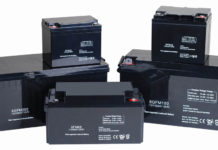
Whether you’re attending rallies with no mains or you’re camping on a site with a full electric hook-up, a secondary battery unit can be your saving grace and it will allow you to power all of your 12V accessories and devices. Even though 12V caravan equipment relies on a leisure battery, you won’t typically get one when you buy your new caravan.
You may think, “but my vehicle already has a battery, how else would it start?” Well, your vehicle’s main battery is designed quite differently from those meant to run appliances. A vehicle battery must provide a high-current surge to start your engine, but once that’s done, the alternator is what replenishes the power. On the other hand, leisure batteries provide a steady flow of current over long time periods, and they rarely get replenished, basically until you recognize that their voltage level has fallen drastically, which is when you just need to recharge them.

That being said, a leisure battery should be constructed in a way that it can withstand constant charging and discharging. For that reason, leisure batteries are oftentimes referred to as deep-cycle batteries. When shopping for leisure batteries to power your 12V accessories, devices and equipment, you’ll find two popular types of deep cycle batteries – AGM and Lithium batteries. While there are other types of leisure batteries, these two are the most advanced and commonly used ones.
AGM Batteries
AGM batteries feature lead plans in each cell they have and the manufacturer uses a specialized machine to add compressed glass fibre into each compartment. Further, air is drawn from the casing and there’s a pressure relief valve fitted. This manufacturing process makes the final product more costly than most other types of batteries, but AGM batteries have a reputation for achieving many more recharging cycles, which contributes to their longer lifespan. Additionally, AGM batteries can be used as starter batteries, meaning you can always rely on one to give your vehicle the surge it needs to start the engine in case your main battery fails.
Lithium Batteries
Lithium batteries are safely contained units which have their own on-board charge manager. These units are lightweight due to the fact that they don’t use any lead whatsoever, and they can be fully recharged and discharged. During the discharge cycle, they can keep a safe and stable voltage level and still be quickly recharged. The only downside of these batteries is their cost since they can be quite expensive when compared to other batteries.















